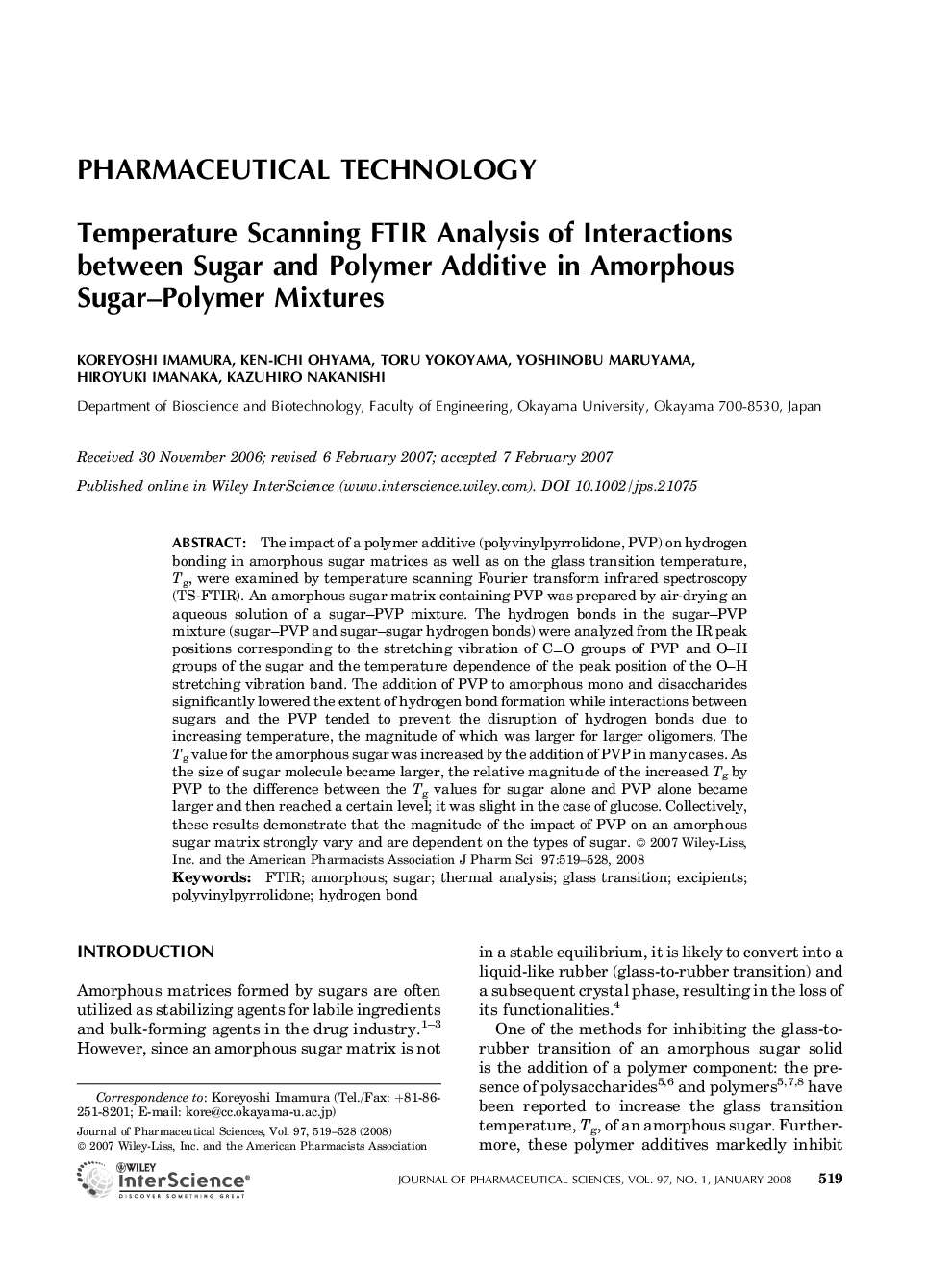| Article ID | Journal | Published Year | Pages | File Type |
|---|---|---|---|---|
| 2487612 | Journal of Pharmaceutical Sciences | 2008 | 10 Pages |
ABSTRACTThe impact of a polymer additive (polyvinylpyrrolidone, PVP) on hydrogen bonding in amorphous sugar matrices as well as on the glass transition temperature, Tg, were examined by temperature scanning Fourier transform infrared spectroscopy (TS‐FTIR). An amorphous sugar matrix containing PVP was prepared by air‐drying an aqueous solution of a sugar–PVP mixture. The hydrogen bonds in the sugar–PVP mixture (sugar–PVP and sugar–sugar hydrogen bonds) were analyzed from the IR peak positions corresponding to the stretching vibration of C=O groups of PVP and O–H groups of the sugar and the temperature dependence of the peak position of the O–H stretching vibration band. The addition of PVP to amorphous mono and disaccharides significantly lowered the extent of hydrogen bond formation while interactions between sugars and the PVP tended to prevent the disruption of hydrogen bonds due to increasing temperature, the magnitude of which was larger for larger oligomers. The Tg value for the amorphous sugar was increased by the addition of PVP in many cases. As the size of sugar molecule became larger, the relative magnitude of the increased Tg by PVP to the difference between the Tg values for sugar alone and PVP alone became larger and then reached a certain level; it was slight in the case of glucose. Collectively, these results demonstrate that the magnitude of the impact of PVP on an amorphous sugar matrix strongly vary and are dependent on the types of sugar. © 2007 Wiley‐Liss, Inc. and the American Pharmacists Association J Pharm Sci 97:519–528, 2008
